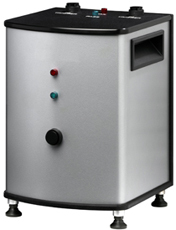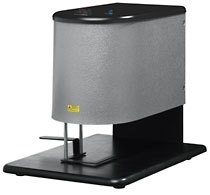Microscan Verification Machines Check 2D Bar Codes for Readability and Compliance
 Ever wonder how a scanner can read a 2D bar code that is worn out or in some way illegible? Being illegible to a scanner does not mean the bar code is old--brand new ones can accidentally smudge while the ink is still wet or become worn out by being in constant contact with other smooth surfaces. That is why it is important for bar codes to be verified for their readability, even before the products reach their retail destinations. Microscan creates technology which can verify these 2D bar codes. Verifying bar codes has become an important step in the process of manufacturing bar codes, so that they can be ready quickly and easily by scanners as merchandise and other equipment is shipped from place to place. Having the data captured in the bar codes can ensure a company's success in business and can also maintain a high level of customer satisfaction.
Ever wonder how a scanner can read a 2D bar code that is worn out or in some way illegible? Being illegible to a scanner does not mean the bar code is old--brand new ones can accidentally smudge while the ink is still wet or become worn out by being in constant contact with other smooth surfaces. That is why it is important for bar codes to be verified for their readability, even before the products reach their retail destinations. Microscan creates technology which can verify these 2D bar codes. Verifying bar codes has become an important step in the process of manufacturing bar codes, so that they can be ready quickly and easily by scanners as merchandise and other equipment is shipped from place to place. Having the data captured in the bar codes can ensure a company's success in business and can also maintain a high level of customer satisfaction.
 How does customer satisfaction play into the verification of bar codes being read? If one business decides to purchase a product from the manufacturer that has a 2D bar code the scanner cannot read, that product is usually set aside for return, which can result in the loss of time and money. Bar codes that have been verified for their readability and are 100% successful in being scanned will retain more customers and lower the number of product returns to the manufacturer. Since verification takes place before the scanning and shipping process, this step eliminates unreadable bar codes being sent out on products.
How does customer satisfaction play into the verification of bar codes being read? If one business decides to purchase a product from the manufacturer that has a 2D bar code the scanner cannot read, that product is usually set aside for return, which can result in the loss of time and money. Bar codes that have been verified for their readability and are 100% successful in being scanned will retain more customers and lower the number of product returns to the manufacturer. Since verification takes place before the scanning and shipping process, this step eliminates unreadable bar codes being sent out on products.
Microscan offers two different data matrix verification machines which include the UID LDP (Labels and Data Plates) Compliance Verifier, and the UID DPM (Direct Part Marks) Compliance Verifier. Both machines meet the ISO/IEC 16022 and 15415 verification standards, have ethernet connectivity, one button calibration, and secure operations mode. The UID DPM Compliance Verifier can analyze 2D bar codes that have been created using a dot peen, laser or chemical etch. The UID LDP Compliance Verifier can verify 2D bar code labels and data plates up to 0.125 inches thick. These machines evaluate and verify symbols used in the bar codes, and will also record and archive verification information from each bar code for auditing purposes.
While scanner readability is the primary benefit of bar code verification systems, other benefits of the Microscan verification system include the compliance with symbols used in industry standards, the maximization of manufacturing productivity, and better quality control which eliminates the need for product returns and loss of profit. Both the UID LDP and UID DPM Compliance Verifiers can be valuable assets to any manufacturer which strives on accuracy for bar code readability.
Microscan began in 1982 and is located in Renton, Washington where it plays a major role in the development of 2D bar code symbology. In addition to bar code verifiers, the company also manufactures scanners, smart cameras, and machine vision lighting products.
Related articles:
Webscan Helps to Ensure Barcode Quality
New Barcode Verifier From Stratix
{jcomments on}
